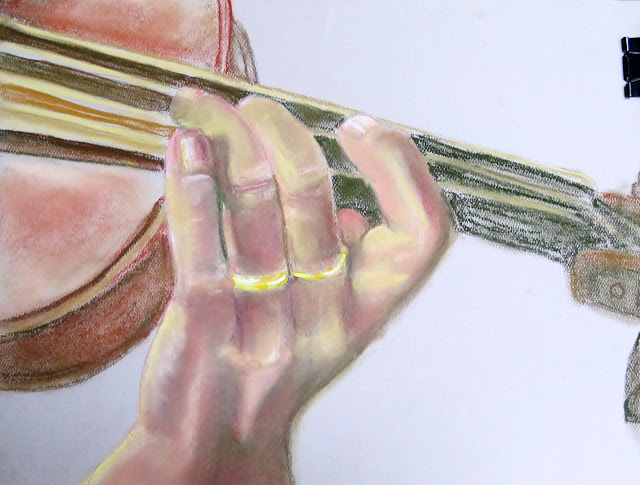 |
| Springtime in Fort Myers -- an Art Show -- 2013 Bell Tower Shops |
Florida
living provides me with an endless supply of stories and artistic material for
painting. Every day I see a wide variety of birds, animals, plants, and aquatic
life.
Take
this morning. I wasn’t expecting to see a black racer snake devour one of its
own on my front porch, but I did. And I
don’t enjoy cracking the door ever so slightly when I leave the house to
prevent a lizard, or whatever else is out there, the slightest chance of
sneaking in; but I do.
I’m
reminded that living in the tropics brings its own special joys and surprises;
like the time I was caught in the buff by a thirsty green frog that was perched
on my toilet seat. I don’t mind sharing, but not in this case.
I
coaxed my mini-intruder into a glass jar and transported him outside, unharmed.
If I can, I prefer to save life, even a frog’s. Lizards are another matter.
When I first moved
to Florida, I couldn’t bear to kill anything. But after chasing several lizards
through the house and having them hide under sofas and chairs, or behind the
bookcase where they die a slow death, I’m willing to exterminate when
necessary. At least lizards don’t stink when they decay. Like withered old
soldiers, they just fade away, leaving a crusty carcass behind.
Today a pair of pileated woodpeckers landed on our
cabbage palm; their arrival a breathtaking flash of blink-bright red and black. Observing their skinny necks and hammer-shaped heads made
me think of another time and place, when prehistoric birds of Jurassic Park
proportions roamed the earth; ancestors perhaps?
The large 18” birds circled the tree, hammering the
shaggy palm bark with heavy silver bills in search of insects and grubs. Both
birds used their long black tail feathers for balance, leaning on them like old
rocking chairs. Suddenly, one of the pair fluttered to the upper palm fronds
exposing white under wing linings, a striking contrast against the black flight
feathers.
Someday I will paint the pileated woodpecker.
My friend watched over the
nest like a mother hen; protecting first the blue green eggs that appeared, and
then the tiny newborns that followed. Each time he stepped out on his porch,
the mother robin swooped over his head and dive-bombed him to protect her nest.
Little did she know that he was a staunch ally.
The robins’ precarious
nest-building habits are not without risk, and many a nest topples to the
ground following a strong windstorm. But when it comes to parenting, robins are
seldom outmatched.
My acrylic painting “Robin
Hood” was inspired by the apple blossoms in the spring and the sighting of a
robin’s nest.
On my daily walk, I watched a
turkey vulture swoop overhead and land on a hot tile roof a few feet away. The
buzzard spread its wings to soak up the sun and rest while it digested its
morning meal.
A startled mocking bird
stopped in mid-flutter to bombard the huge bird, diving at it with angry
squawks and stabs of its beak, despite the fact that its enemy was ten times
its size.
The indifferent vulture pulled
in its neck, tucked its small red head between gangley wing blades, and
stubbornly ignored the mocker’s tenacious thrusts.
Not to be outdone, the gutsy
mocker continued to swoop and dive, until finally the exasperated vulture
lifted its dark wings against the sky and flew off in search of a new perch.
I enjoy the antics of the
Florida mocking bird, a slightly browner version than its northern counterpart.
Its uproarious songs and saucy attitude inspired my acrylic painting: “Berry
picking time.”
 |
| "Berry Picking Time" 16 x 20 acryllic on canvas |
















































